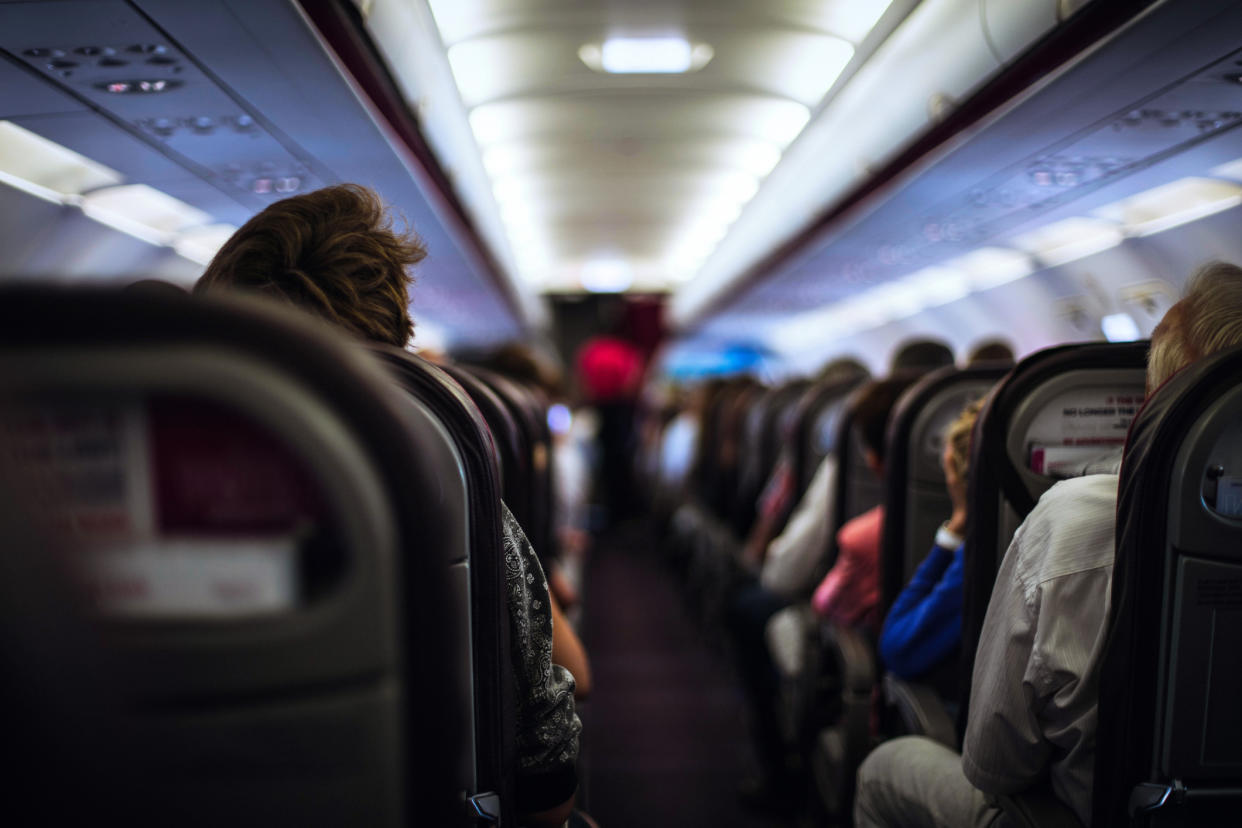What are your rights if your plane is quarantined?

Three planes traveling to the U.S. from overseas this week had to be quarantined upon arrival. The first was a flight from Dubai, United Arab Emirates, that landed at New York’s John F. Kennedy Airport on Wednesday; the second and third flights arrived at Philadelphia International Airport on Thursday. All three flights contained a number of passengers returning from Mecca, Saudi Arabia, where there has been a flu outbreak, NBC Philadelphia reports.
Rapper Vanilla Ice, who was a passenger on the flight traveling from Dubai, called the situation “crazy” on Facebook. “I’m stuck on the runway with like 1000 police, ambulances, fire trucks,” he wrote. He later tweeted, “So happy I’m up top,” after hearing of passengers on the bottom level of the double-decker plane who were reportedly ill. “Apparently, there is over 100 people sick.”
A quarantine helps protect the public by preventing exposure to people who have or may have a contagious disease, according to the Centers for Disease Control and Prevention (CDC) website. There are quarantine stations across the country to help facilitate these periods of isolation to prevent other people from becoming ill, infectious disease expert Amesh A. Adalja, MD, tells Yahoo Lifestyle.
The CDC has a host of information online about preventing the spread of illness on flights, but what actually happens in a quarantine situation remains a little murky. According to the CDC, the flight’s crew members need to report to the pilot all sick passengers with certain symptoms: a fever with a rash, persistent cough, or persistent vomiting; a fever that has lasted for more than 48 hours; or if the person has other symptoms of a communicable disease. The pilot is also urged to contact the CDC quarantine station closest to their arrival city.
Adalja, who is a senior scholar at the John’s Hopkins Center for Health Security, says the latest quarantines were “very brief.” (NBC Philadelphia reports that people were quarantined for “several hours” on Wednesday.) “Officials were quickly seeing what was going on, and then the passengers disembarked,” he says. “Everyone was allowed to go on their way. It was not a strict quarantine.
“Officials have to figure out what’s going on,” he adds, pointing out that symptoms could be caused by something other than an infectious disease. “You have to err on the side of caution, especially as we’re getting close to flu season,” Adalja says.
If you spot someone on your flight who seems to have these symptoms, Adalja says it’s important to alert a flight attendant. As for yourself, Adalja recommends people “practice good hand hygiene while avoiding contact with body fluids.”
Legally, there’s not much passengers can do if they’re under a mandated quarantine. The CDC has the jurisdiction by law under section 361 of the Public Health Service Act (42 U.S. Code § 264), to take measures to prevent the entry and spread of communicable diseases from foreign countries into the United States and between states.
The CDC also states on its website: “When alerted about an ill passenger or crew member by the pilot of a plane or captain of a ship, CDC may detain passengers and crew as necessary to investigate whether the cause of the illness on board is a communicable disease.” Laws regarding this vary by state, but in most states, according to the CDC, breaking a quarantine order is a criminal misdemeanor. Basically, you can be arrested if you push your way off a plane that’s been quarantined.
But potential legal issues aside, it’s a good idea to cooperate from a public health standpoint, Adalja says. “Officials are just trying to keep contagious infectious diseases from spreading,” he says.
Read more from Yahoo Lifestyle:
Woman slams airlines for calling her ‘Miss’ instead of ‘Doctor’
Trans woman says airline ‘outed me in front of the whole plane’
What happens inside your body when you’re flying on an airplane?
Follow us on Instagram, Facebook, and Twitter for nonstop inspiration delivered fresh to your feed, every day.
